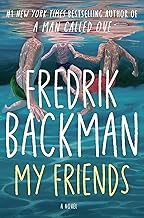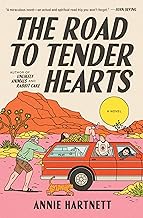Image Citation: OpenAI. (2025). ChatGPT [Large language model]. https://chatgpt.com/query: “Draw a visual representation of Jorge Luis Borges’s “Aleph,” described as a small iridescent sphere containing everything everywhere and every time all at once.” (My words, other than “small iridescent sphere.”)
It is difficult to describe infinity, much less draw it, and there has long been a desire to give words to things such as heaven or eternity, but always falling short. JLB came the closest, and as far as I know.
It is likely that JLB was inspired Georg Cantor’s use of the Hebrew letter aleph to describe the aleph numbers, which are used to describe the size of infinite sets. The aleph looks approximately close to the mathematical sign for infinity. Cantor thought that contemplation of the absolute infinite was akin to trying to touch God. When I searched for any link between the two, I did not find one, but did find a reference to JLB once saying that The Aleph was inspired by writings of HG Wells. Regardless, here it is, the ineffable Aleph, in JLB’s words:
“Under the step, toward the right, I saw a small iridescent sphere of almost unbearable brightness. At first I thought it was spinning; then I realized that the movement was an illusion produced by the dizzying spectacles inside it. The Aleph was probably two or three centimeters in diameter, but universal space was contained inside it, with no diminution in size. Each thing (the glass surface of a mirror, let us say) was infinite things, because I could clearly see it from every point in the cosmos. I saw the populous sea, saw dawn and dusk, saw multitudes of the Americas, saw a silvery spider-web at the center of a black pyramid, saw a broken labyrinth (it was London), saw endless eyes, all very close, studying themselves in me as though in a mirror, saw all the mirrors on the planet (and none of them reflecting me), saw in a rear courtyard on Calle Soler the same tiles I’d seen twenty years before in the entryway of a house in Fay Bentos, aw clusters of grapes, snow, tobacco, veins of metal, water vapor, saw convex equatorial deserts and their every grain of sand, saw a woman in Inverness whom I shall never forget, saw her violent hair, her haughty body, saw a cancer in her breast, saw a circle of dry soil within a sidewalk where there had once been a tree, saw a country house in Adrogue, saw a copy of the first English translation of Pliny (Philemon Hollands’s), saw simultaneous night and day, saw a sunset in Queretaro that seemed to reflect the color of a rose in Bengal, saw horses with wind-whipped manes on a beach in the Caspian Sea at dawn, saw the delicate bones of a hand, saw the survivors of a battle sending postcards, saw a Tarot card in a shopwindow in Mirzapur, saw the oblique shadows of ferns on the floor of a greenhouse, saw tigers, pistons, bisons, tides, and armies, saw all the ants on earth, saw a Persion astrolabe, saw in a desk drawer (and the handwriting, made me tremble) obscene, incredible, detailed letters thta Beatriz had sent Carlos Argentino, saw a beloved monument in Charcarita, saw the horrendous remains of what had once, deliciously, been Beatriz Viterbo, saw teh circulation of my dark blood, saw teh coils and springs of love and the alterations of death, saw the Aleph from everywhere at once, saw the earth in the Aleph, and the Aleph once more in the earth and the earth in the Aleph, saw my face and my viscera, saw your face, and I felt dizzy, and I wept, because my eyes had seen that secret, hypothetical object whose name has been usurped by men but which no man has ever truly looked upon: the inconceivable universe.
I had a sense of infinite veneration, infinite pity.”
I would note that I manually entered the above from Jorge Luis Borges Collected Fictions, translated by Andrew Hurley.50th printing, 1998. Pages 283–284. However, there has been a revision, so page numbers likely not accurate.
I would further note that the Aleph was located in the cellar of Carlos Argentino after being instructed to descend the stairs to a couch on the floor, lay down and look back up to the 19th stair.
I love JLB’s short stories. The Aleph is the final story of a collection titled the same of 1949.




0 Comments